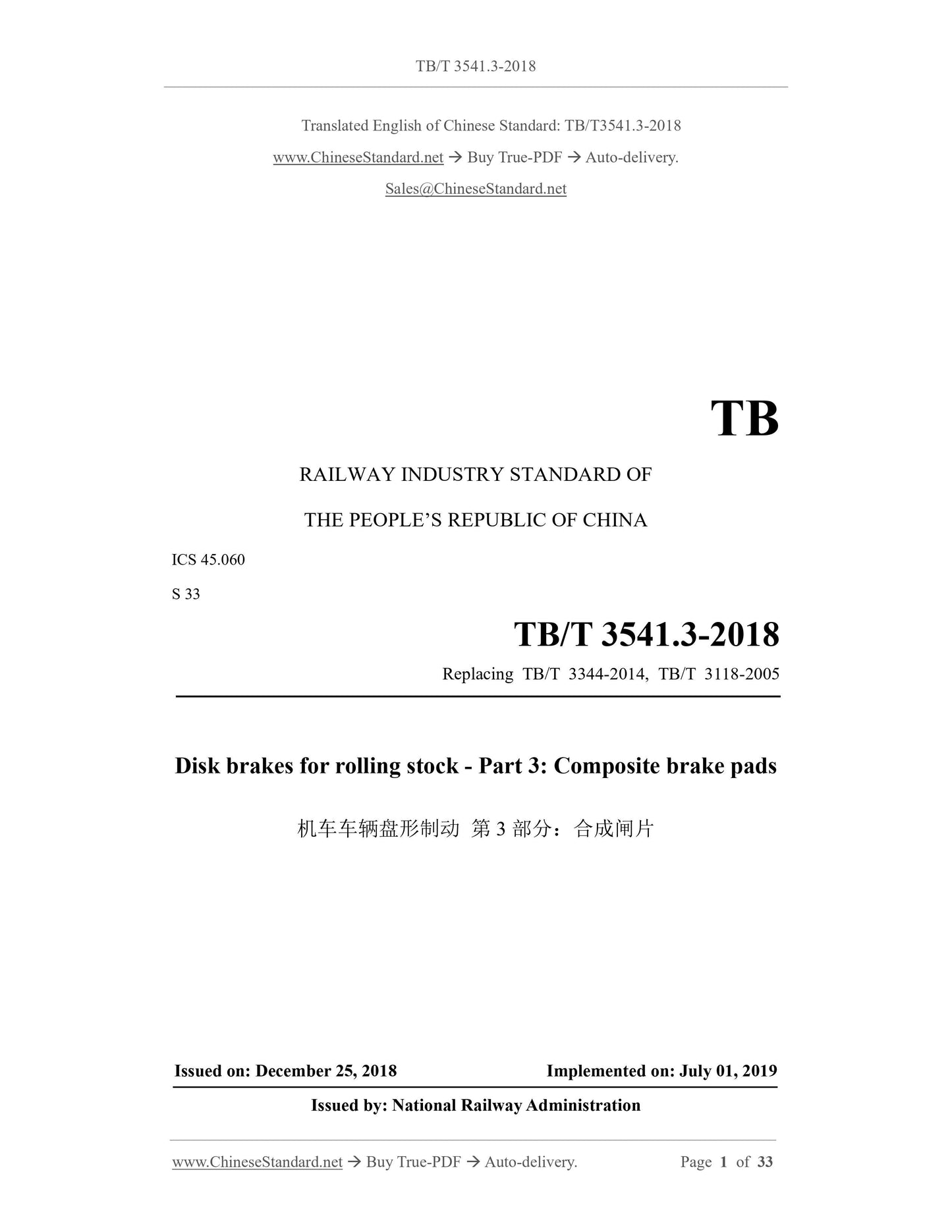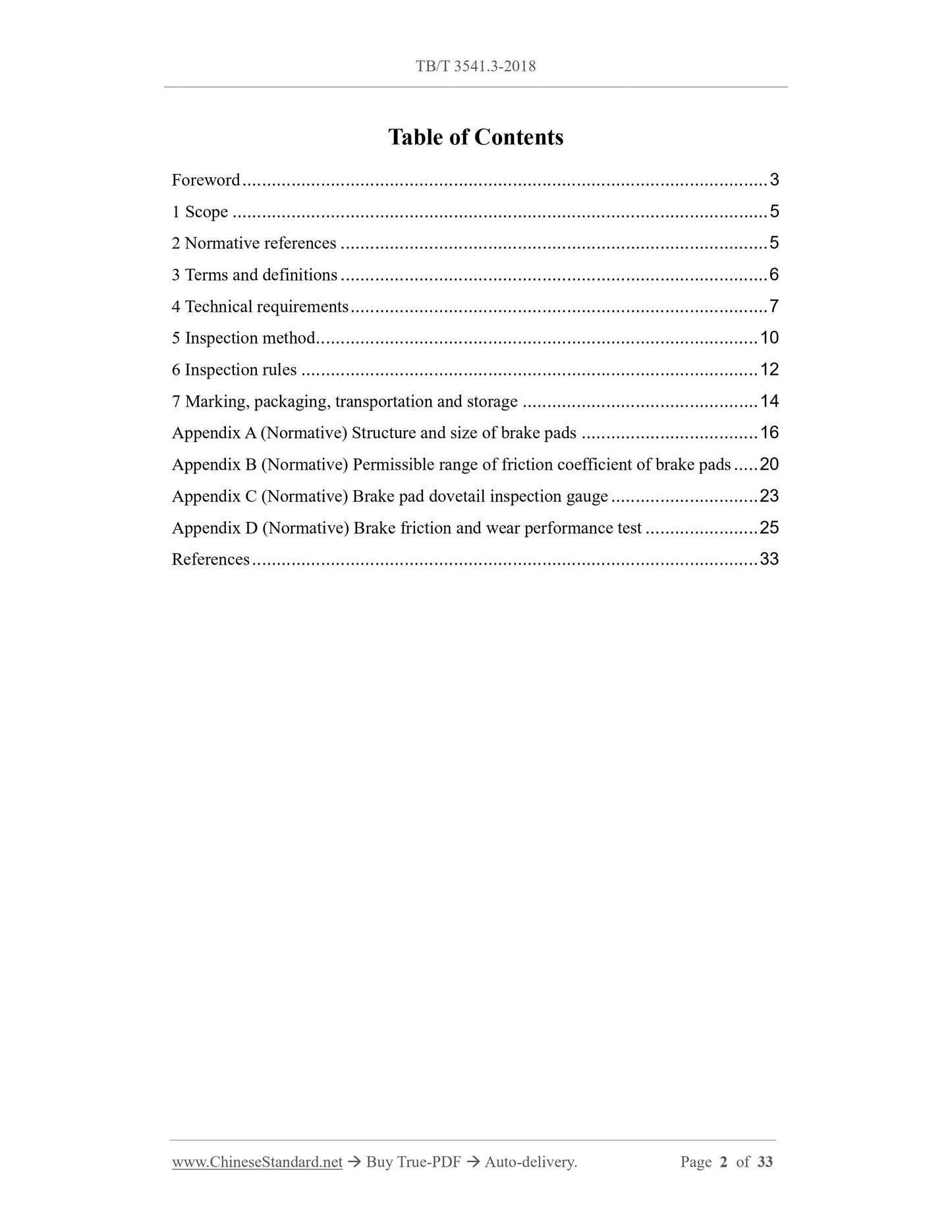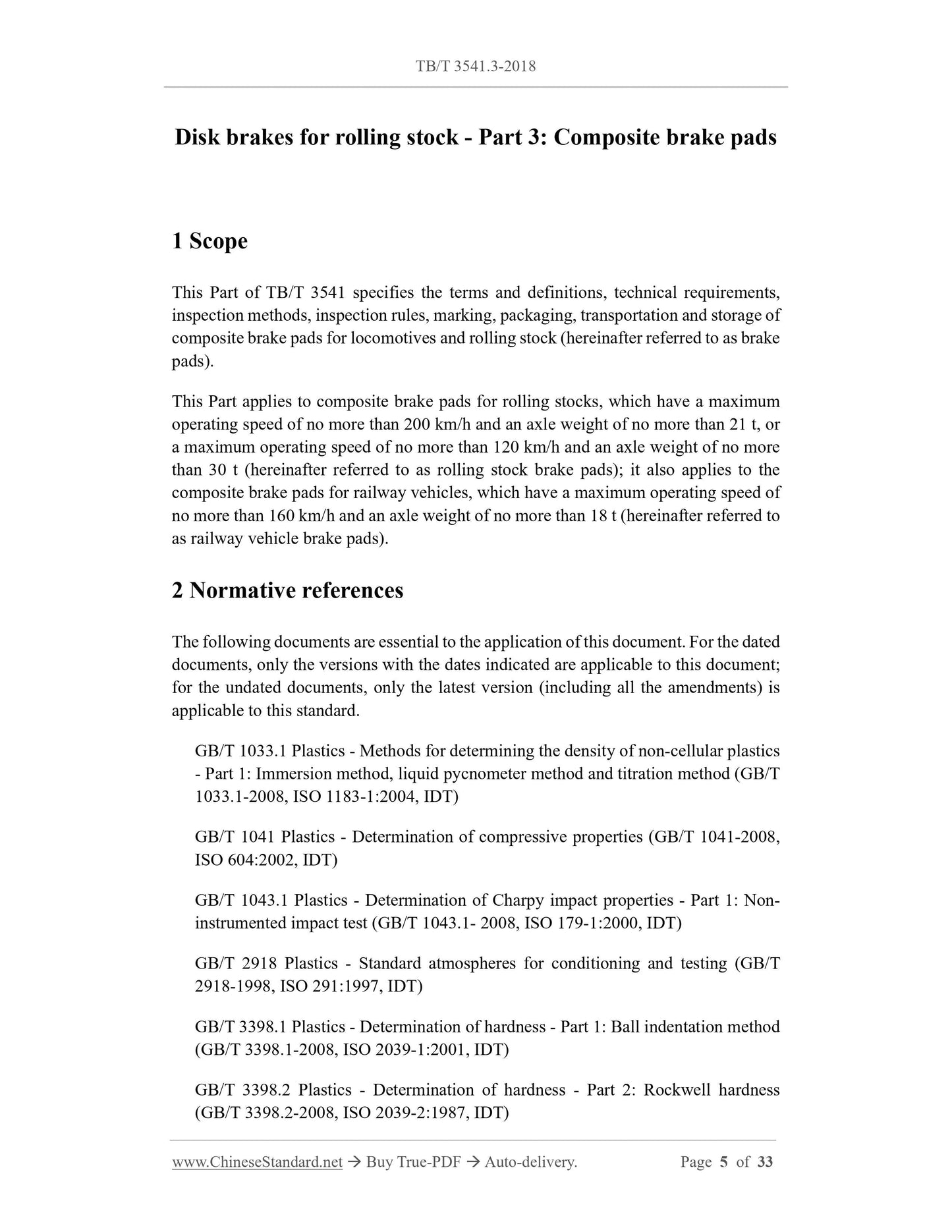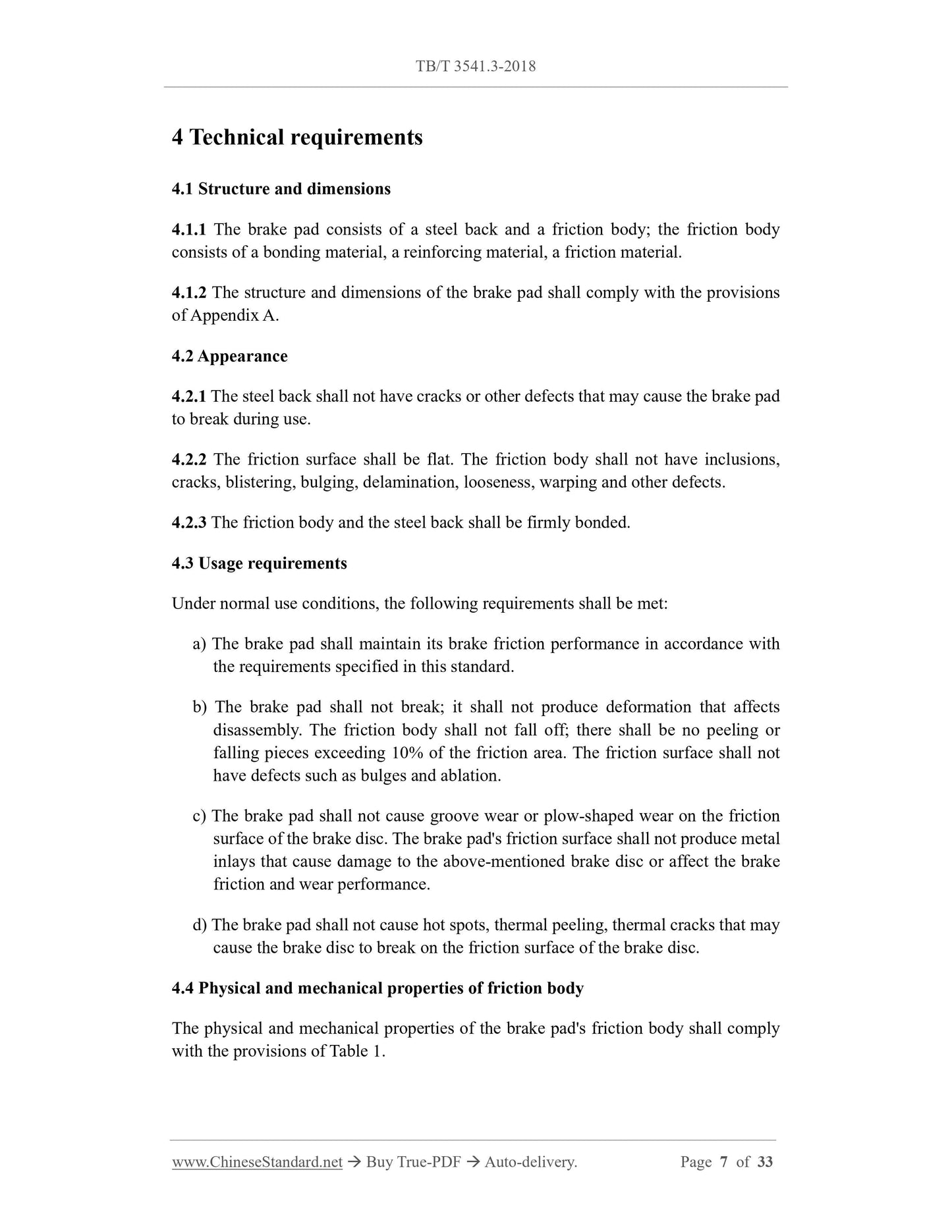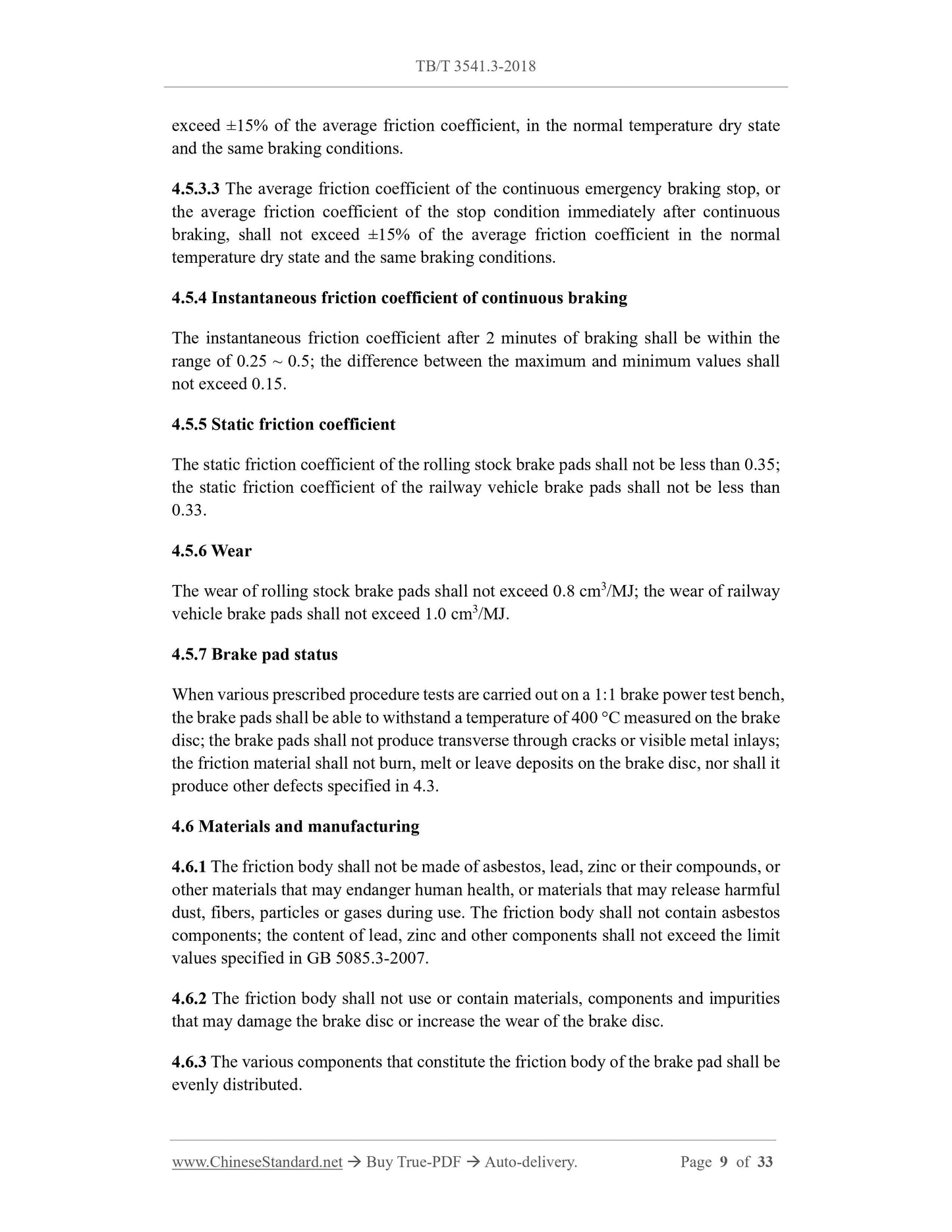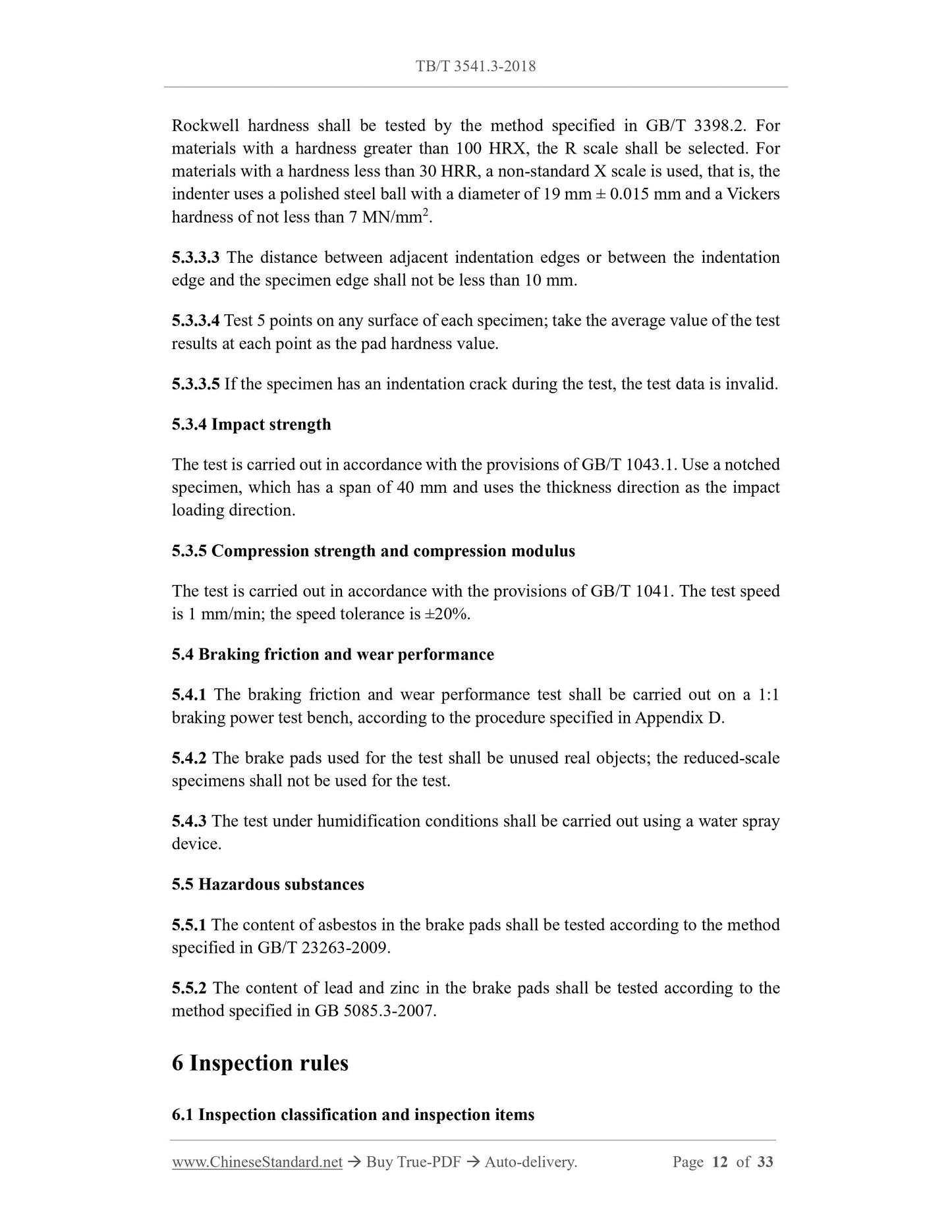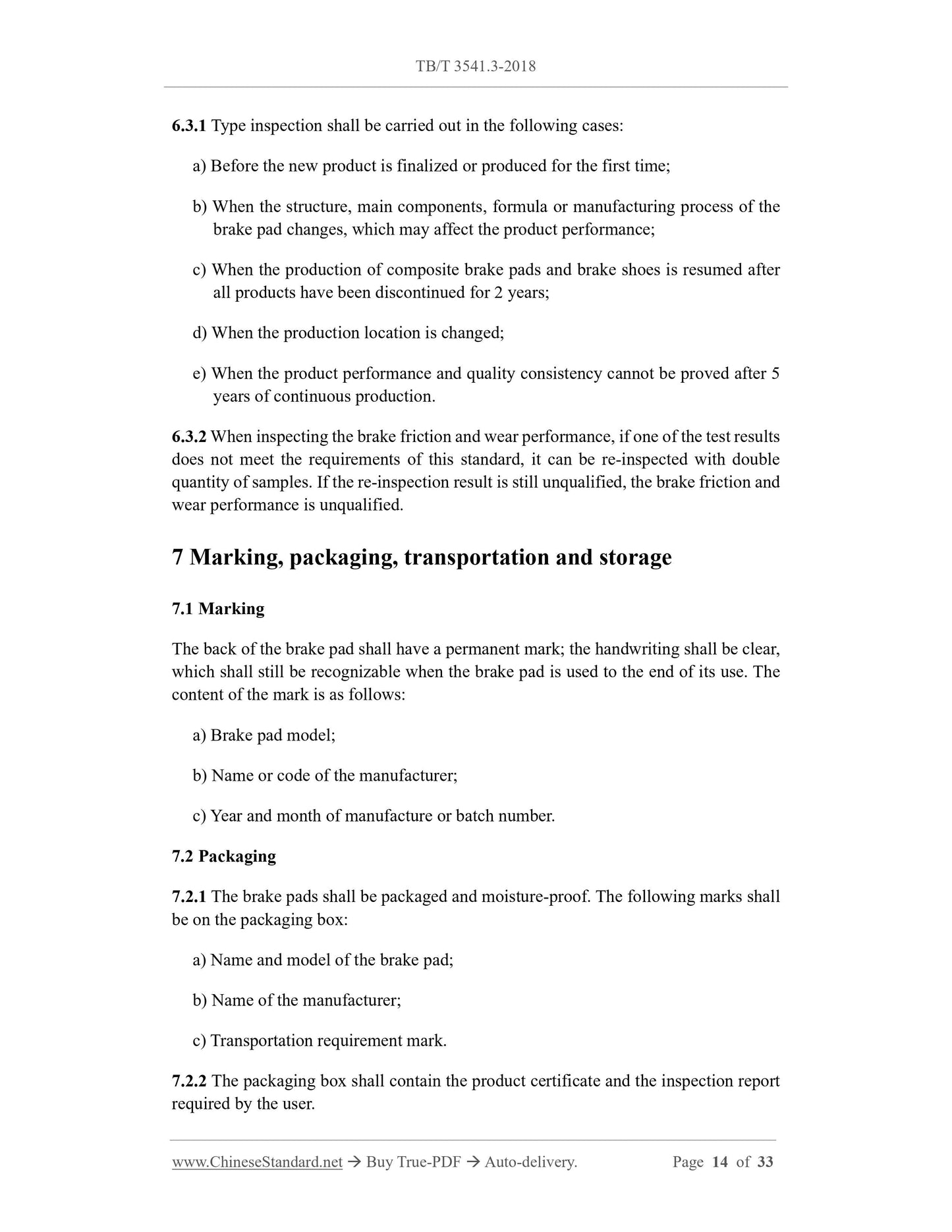1
/
of
7
www.ChineseStandard.us -- Field Test Asia Pte. Ltd.
TB/T 3541.3-2018 English PDF (TB/T3541.3-2018)
TB/T 3541.3-2018 English PDF (TB/T3541.3-2018)
Regular price
$475.00
Regular price
Sale price
$475.00
Unit price
/
per
Shipping calculated at checkout.
Couldn't load pickup availability
TB/T 3541.3-2018: Disk brakes for rolling stock. Part 3: Composite brake pads
Delivery: 9 seconds. Download (and Email) true-PDF + Invoice.Get Quotation: Click TB/T 3541.3-2018 (Self-service in 1-minute)
Newer / historical versions: TB/T 3541.3-2018
Preview True-PDF
Scope
This Part of TB/T 3541 specifies the terms and definitions, technical requirements,inspection methods, inspection rules, marking, packaging, transportation and storage of
composite brake pads for locomotives and rolling stock (hereinafter referred to as brake
pads).
This Part applies to composite brake pads for rolling stocks, which have a maximum
operating speed of no more than 200 km/h and an axle weight of no more than 21 t, or
a maximum operating speed of no more than 120 km/h and an axle weight of no more
than 30 t (hereinafter referred to as rolling stock brake pads); it also applies to the
composite brake pads for railway vehicles, which have a maximum operating speed of
no more than 160 km/h and an axle weight of no more than 18 t (hereinafter referred to
as railway vehicle brake pads).
Basic Data
| Standard ID | TB/T 3541.3-2018 (TB/T3541.3-2018) |
| Description (Translated English) | Disk brakes for rolling stock. Part 3: Composite brake pads |
| Sector / Industry | Railway and Train Industry Standard (Recommended) |
| Classification of Chinese Standard | S33 |
| Classification of International Standard | 45.060 |
| Word Count Estimation | 24,289 |
| Date of Issue | 2018-12-25 |
| Date of Implementation | 2019-07-01 |
| Older Standard (superseded by this standard) | TB/T 3118-2005; TB/T 3344-2014 |
| Quoted Standard | GB/T 1033.1; GB/T 1041; GB/T 1043.1; GB/T 2918; GB/T 3398.1; GB/T 3398.2; GB 5085.3-2007; GB/T 23263-2009 |
| Regulation (derived from) | Natural Resources Department Announcement No. 7 of 2019 |
| Issuing agency(ies) | National Railway Administration |
| Summary | This standard specifies the terms and definitions, technical requirements, inspection methods, inspection rules, marking, packaging, transportation and storage of synthetic brake discs (hereinafter referred to as brake discs) for rolling stock. This standard is applicable to composite brake discs for locomotives with a maximum running speed of not more than 200 km/h and an axle weight of not more than 21 t, or a maximum operating speed of not more than 120 km/h and an axle weight of not more than 30 t (hereinafter referred to as locomotive brake discs). And; synthetic brake pads for railway vehicles with a maximum operating speed of not more than 160 km/h and an axle weight of not more than 18 t (hereinafter referred to as vehicle brakes). |
Share
